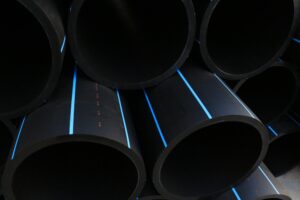Choosing the Right Anesthesia Circuit: Factors to Consider
The Aircraft Refuelling Hose Market was valued at USD 1.17 billion in 2023 and is projected to reach USD 1.57 billion, with a CAGR of 3.78% by 2031.

The Aircraft Refuelling Hose Market was valued at USD 1.17 billion in 2023 and is projected to reach USD 1.57 billion, with a CAGR of 3.78% by 2031.
Introduction
When it comes to anesthesia, the choice of the anesthesia circuit is critical. This selection can influence the safety and effectiveness of the anesthesia delivery, as well as patient outcomes. Anesthesia circuits are systems used to deliver anesthetic gases and oxygen to patients while removing carbon dioxide. They can be classified broadly into two types: rebreathing circuits and non-rebreathing circuits. Selecting the right anesthesia circuit involves considering several key factors, including patient-specific needs, the type of surgery, and the clinical environment.
Definition
Medical equipment called anesthesia circuits are used to remove carbon dioxide exhaled by patients during surgical procedures and administer anesthetic gases and oxygen to them. They connect the patient’s airway to the anesthesia machine through a network of tubes, valves, and connectors. Depending on whether they let the patient breathe back in gases they’ve already expelled, these circuits can be either rebreathing or non-rebreathing.
Types of Anesthesia Circuits
Rebreathing Circuits:
- Circle System: This is the most common type of rebreathing circuit, used extensively in both human and veterinary anesthesia. It allows for the conservation of anesthetic gases and reduces the amount of fresh gas flow required. The circle system incorporates components like a carbon dioxide absorber, one-way valves, and a reservoir bag, ensuring that exhaled gases are scrubbed of CO2 and reintroduced into the circuit.
- Advantages: Cost-effective, efficient use of anesthetic gases, and maintains a stable anesthetic environment.
- Disadvantages: More complex, requires regular monitoring and maintenance, and the potential for increased resistance to breathing.
Non-Rebreathing Circuits:
- Mapleson Systems: These include the Mapleson A, B, C, D, E, and F systems, each with varying efficiency and complexity. Non-rebreathing circuits do not recycle exhaled gases; instead, they rely on a high fresh gas flow to remove CO2.
- Advantages: Simple design, low resistance to breathing, and suitable for smaller patients, such as infants and small animals.
- Disadvantages: Higher gas consumption and less efficiency in conserving anesthetic agents.
Factors to Consider
Patient Characteristics:
- Age and Size: The patient’s age and size significantly influence the choice of anesthesia circuit. Pediatric patients and small animals typically require non-rebreathing circuits due to their low resistance and minimal dead space. In contrast, adult patients can benefit from rebreathing circuits, which are more efficient in gas usage.
- Health Status: Patients with compromised respiratory function may benefit from circuits with low resistance, such as non-rebreathing systems, to minimize the work of breathing.
- Specific Conditions: Patients with certain medical conditions, like COPD or asthma, may require specific circuit modifications to ensure optimal ventilation and gas exchange.
Type of Surgery:
- Duration of Surgery: Longer surgeries generally benefit from rebreathing circuits due to their efficiency in conserving anesthetic gases. Shorter procedures might be more suitable for non-rebreathing systems, which are easier to manage and require less maintenance.
- Type of Procedure: Procedures involving the respiratory tract, such as thoracic surgery, may necessitate specific circuit adaptations to ensure adequate ventilation and patient safety.
- Anesthetic Requirements: The choice of anesthetic agents and the required concentration can influence circuit selection. For example, rebreathing circuits are better suited for agents that require precise control over concentration levels.
Clinical Environment:
- Facility Resources: The availability of equipment and resources at the healthcare facility plays a crucial role. Rebreathing circuits require more components, such as CO2 absorbers and one-way valves, which need regular maintenance and replacement. Non-rebreathing circuits, being simpler, require fewer resources.
- Personnel Expertise: The level of expertise of the anesthesia team can influence the choice of circuit. Rebreathing systems are more complex and require skilled personnel to monitor and manage them effectively.
- Infection Control: In certain settings, such as in infectious disease cases, single-use non-rebreathing circuits may be preferred to minimize cross-contamination risks.
Economic Considerations:
- Cost of Equipment: Rebreathing circuits generally have higher upfront costs due to their complexity and the need for additional components. Circuits that do not require breathing are simpler and less expensive.
- Operational Costs: Over time, the cost of maintaining and replacing components in rebreathing circuits can add up. Non-rebreathing circuits, while consuming more gas, may have lower long-term maintenance costs.
- Efficiency: The efficiency of anesthetic gas usage can also impact overall costs. Rebreathing circuits, with their ability to conserve gases, may offer cost savings in high-volume settings.
Advances in Anesthesia Circuit Technology
- Integrated Monitoring Systems: Modern anesthesia circuits often come with integrated monitoring capabilities, allowing real-time tracking of gas concentrations, pressure, and patient parameters. This enhances the ability to respond quickly to changes in patient status.
- Improved Materials: Advances in materials science have resulted in circuits that are more durable, flexible, and resistant to wear and tear. This improves the reliability and longevity of the equipment.
- Eco-Friendly Options: With increasing awareness of environmental impact, some manufacturers are developing circuits designed to reduce waste and energy consumption. These eco-friendly options align with broader sustainability goals in healthcare.
Growth Rate of Anesthesia Circuits Market
The size of the global anesthesia circuits market was estimated at USD 1.17 billion in 2023 and is expected to grow at a compound annual growth rate (CAGR) of 3.78% from 2024 to 2031, reaching USD 1.57 billion.
Read More: https://www.databridgemarketresearch.com/reports/global-anesthesia-circuits-market
Conclusion
Choosing the right anesthesia circuit is a multifaceted decision that requires careful consideration of various factors, including patient characteristics, the type of surgery, the clinical environment, and economic considerations. By understanding the strengths and limitations of different circuit types and keeping abreast of technological advancements, healthcare providers can make informed decisions that enhance patient safety, improve clinical outcomes, and optimize resource utilization.





